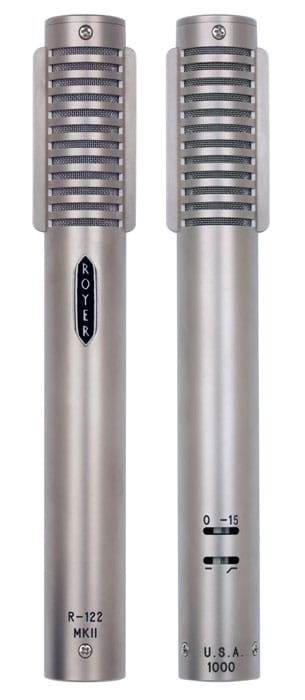
When Royer Labs presented the R-122 in 2002, the world was introduced to the phantom fueled Dynamic Ribbon™ mouthpiece. It was a big improvement in lace mics. By combining impedance coordinating circuitry with condenser-like yield levels, the R-122 could be used on even the calmest sound sources. Furthermore, the mic had was very accessible and compatible with most pre-amplifiers. Now, the R-122 MKll innovates the R-122 by conveying uncommon adaptability for strips through the addition of a switchable -15dB cushion, and a switchable bass-cut channel.
The Royer R-122 builds upon a storied a tradition
The switches are independent of the circuit when separated. Consequently, when both are off, the mouthpiece becomes an unique R-122. The switches are found on the back of the mouthpiece and recessed to anticipate inadvertent actuation. The switchable -15dB cushion is a new tool of the Royer R-122 MKII. It’s integrated into the microphone’s hardware and, when locked in, disposes of any potential for headroom-related mutilation. Not even the loudest noises can penetrate such a formidable wall.
The R-122MKII works very well with most instruments. Wide-open electric guitars are no issue. With the cushion within, the mic’s yield is really 2dB lower than the R-121. The Royer R-122 MKll’s well-designed cushion has no sonic engrave. Once the levels are coordinated, the R-122 MKll reproduces sounds with great quality regardless of whther the cushion is in.
The R-122 MKll’s bass cut begins sifting at 100 Hz, 6dB per octave. This successfully decreases the mic’s bass buildup due to nearness impact. The smoothness of the channel works very well on vocals, acoustic and close-miked electric guitars, among other instruments. Ordinary lace amplifiers require high-quality, high-gain receiver preamplifiers to record gentler sound sources. However, the R-122 MKll’s yield level is much higher, so you can use any mic preamplifier to record the calmest sounds.
Image: Royer Labs
